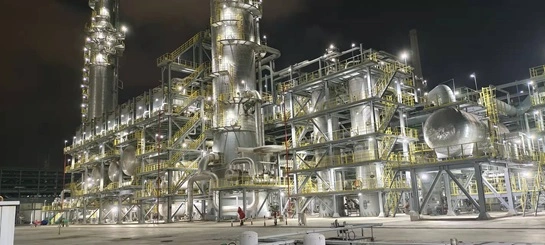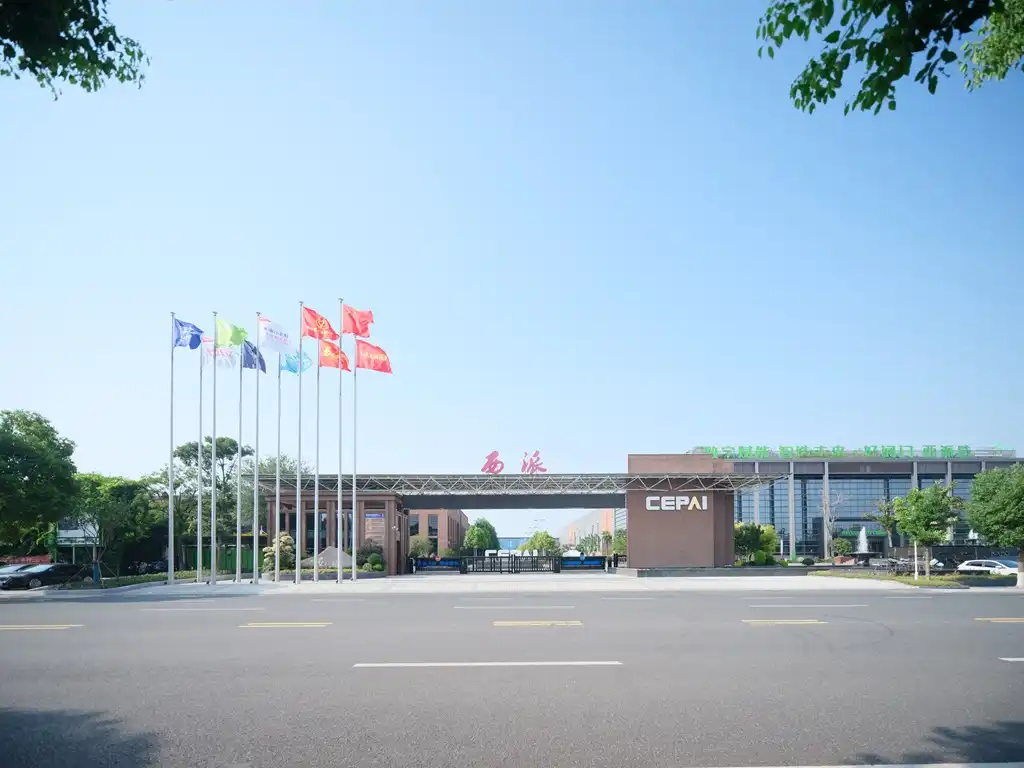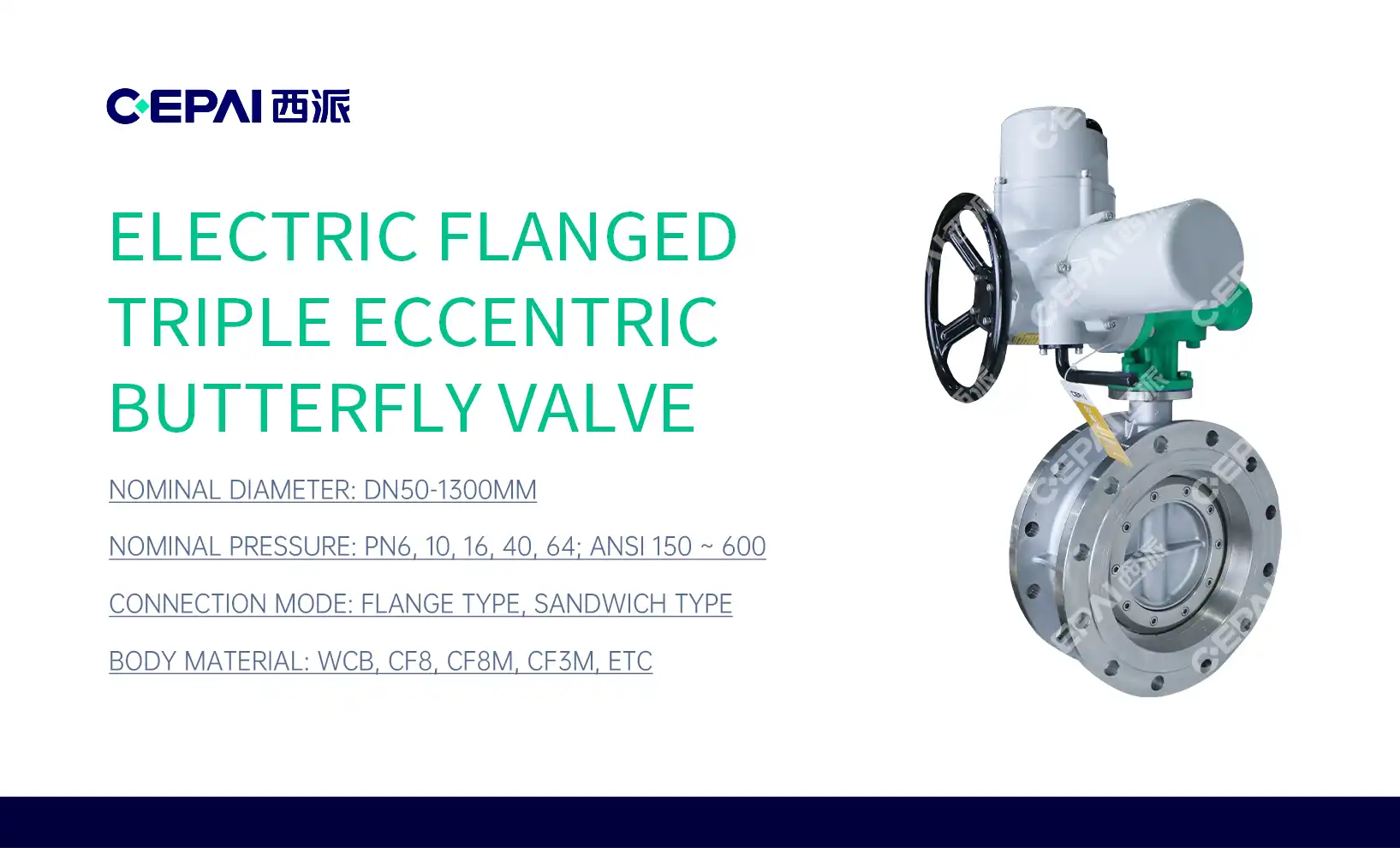The Mechanics of Double Offset Butterfly Valves
Principle of Operation
Double offset butterfly valves operate on a sophisticated principle that sets them apart from their single offset counterparts. The valve's disc, typically circular or elliptical, is mounted on a rotating shaft. As the shaft turns, the disc pivots between the fully open and fully closed positions. The "double offset" refers to two key design features: the first offset places the stem slightly off the centerline of the pipe and disc seat, while the second offset positions the stem behind the face of the disc. This ingenious arrangement allows the disc to lift away from the seat as it opens, reducing friction and wear on the sealing components.
Sealing Mechanism
The sealing mechanism in double offset butterfly valves is a marvel of engineering. Unlike conventional butterfly valves, where the disc presses directly against the seat, double offset designs utilize a camming action. As the valve closes, the disc approaches the seat at an angle, then settles into place with a slight rotation. This motion creates a wedging effect, enhancing the seal's integrity. The sealing surface is typically made from resilient materials like PTFE or elastomers, which conform to minor imperfections in the disc, ensuring a tight shut-off even under challenging conditions.

Flow Characteristics
Double offset butterfly valves exhibit unique flow characteristics that contribute to their versatility. When fully open, these valves offer minimal obstruction to flow, resulting in low pressure drop and high flow coefficients. As the disc rotates towards the closed position, it provides precise control over flow rates. The offset design allows for a more linear relationship between disc position and flow rate compared to centered disc designs. This feature makes double offset butterfly valves particularly suitable for applications requiring accurate flow modulation, such as in process control systems or large-scale water distribution networks.
Advantages and Applications of Double Offset Butterfly Valves
Enhanced Sealing Performance
One of the primary advantages of double offset butterfly valves is their superior sealing capabilities. There will be less room for leakage thanks to the offset design's improved disc-to-seat seal. These valves are ideal for uses where absolute zero leakage is crucial since their tight seal remains intact even when subjected to high pressures. Because it guarantees the integrity and safety of processes, this improved sealing performance is very useful in industries including power generation, chemical processing, and oil and gas.
Reduced Wear and Maintenance
The unique geometry of double offset butterfly valves contributes significantly to their longevity and reduced maintenance requirements. The disc is lifted away from the seat while the valve is operating, reducing wear and friction on the sealing surfaces. Because of this design element, the product has a longer lifespan and requires less downtime for repairs or replacement. In demanding industrial environments where downtime is costly, the reliability of double offset butterfly valves makes them a preferred choice for critical flow control applications.
Versatility in Industrial Applications
Among the many industrial uses for double offset butterfly valves is their extraordinary adaptability. Because of their small size and high flow rates, these valves are perfect for tight places where bigger ones wouldn't work. Due to how well they handle both gases and liquids, these valves are used in a wide range of settings, such as water treatment plants, HVAC systems, and petrochemical plants. Because they are flexible and can work well in a wide range of pressure and temperature environments, they are important to modern manufacturing processes.
Design Considerations and Innovations
Material Selection
The choice of materials plays a crucial role in the performance and durability of double offset butterfly valves. The body, disc, and stem are typically constructed from robust metals such as stainless steel, carbon steel, or specialized alloys, depending on the specific application requirements. For corrosive environments, materials like duplex stainless steel or nickel alloys might be employed to ensure longevity. The seat ring material is equally important, with options ranging from elastomers for general applications to high-performance polymers like PTFE for extreme chemical resistance. To guarantee the best execution and longest life expectancy for the valve, it is critical to carefully look at media compatibility, temperature ranges, and weight appraisals whereas choosing the fabric.
Actuation and Control Systems
The effectiveness of double offset butterfly valves is greatly enhanced by sophisticated actuation and control systems. Even though there are times when human operation is more appropriate, automated control is often required for industrial processes. The valve can be equipped with electric, hydraulic, or pneumatic actuators for precise and responsive operation. Advanced control systems can do things like diagnose problems, operate remotely, and even do predictive maintenance. Smart valve controllers and digital positioners are two examples. Valve performance, as well as system efficiency and reliability, have both been enhanced by recent technological improvements.
Cutting-Edge Design Improvements
Ongoing research and development in valve technology continue to push the boundaries of double offset butterfly valve design. New developments have focused on improving flow patterns to lessen turbulence and boost efficiency. By utilising computational fluid dynamics models and computer-aided design, engineers are able to precisely adjust valve designs for various uses. To find a middle ground between lightweight and strong, corrosion-resistant materials, some producers are looking at advanced composites. Smart valves are becoming a reality because to sensor and Internet of things integration, which vastly enhances their operational efficiency and dependability in crucial industrial operations. Now these valves can do predictive maintenance and track performance in real time.
Conclusion
A gigantic change in liquid control innovation, double offset butterfly valve plans give an noteworthy mix of execution, unwavering quality, and flexibility. In comparison to conventional valve designs, their one-of-a-kind geometric arrangement improves sealing, decreases wear, and flow characteristics. As industries continue to demand more efficient and reliable flow control solutions, double offset butterfly valves are poised to play an increasingly important role. These valves will stay pioneers in mechanical liquid administration for a exceptionally long time since of their versatility and the persistent advancement of savvy advances and materials.
Contact Us
Ready to elevate your fluid control systems? CEPAI Group specializes in cutting-edge valve technologies, including state-of-the-art double offset butterfly valves. Experience the benefits of enhanced performance, reduced maintenance, and improved operational efficiency. Contact us at cepai@cepai.com to discover how our expert solutions can optimize your industrial processes.


_1746598525968.webp)



